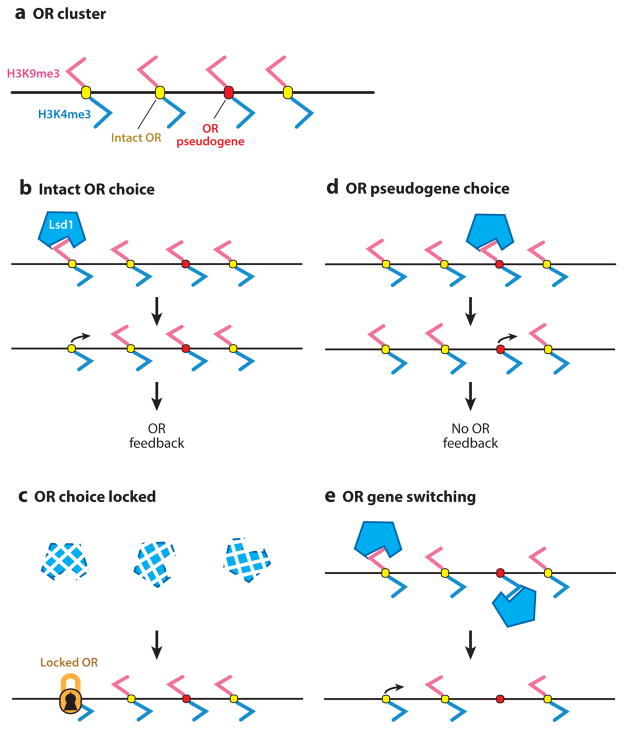Figure 1.
A model for gene switching and stabilization of olfactory receptor (OR) gene choice. (a) Prior to OR choice, ORs are silenced by H3K9me3. They are also marked with H3K4me3. (b) LSD1 removes H3K9me3 from an intact OR gene, allowing for its transcription and the activation of unfolded protein response (UPR)-based feedback. (c) LSD1 is downregulated, locking the choice of the OR. (d ) Alternatively, LSD1 removes H3K9me3 from an OR pseudogene, allowing for its transcription. The pseudogene product fails to activate the UPR. (e) Prolonged LSD1 activity results in removal of H3K4me3, silencing the initially chosen allele, and the removal of H3K9me3 from another OR gene to allow for gene switching.

